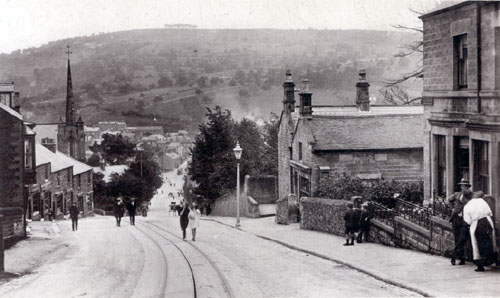Tram #3. Three were held, one as a spare for emergencies. Colour
scheme was royal blue and white. Garden seats with reversible backs
were used, face to face (a novelty and popular). Room for 13 passengers
inside and 18 outside.
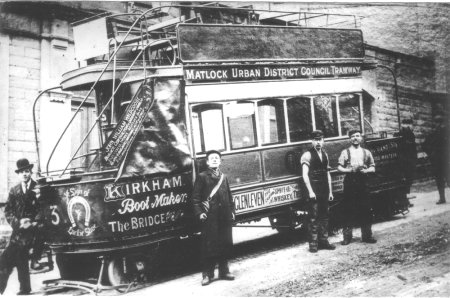
The official opening of Matlock cable tramway, 28 Mar 1893.
Tram #3 (Sent by Dave Bradley)
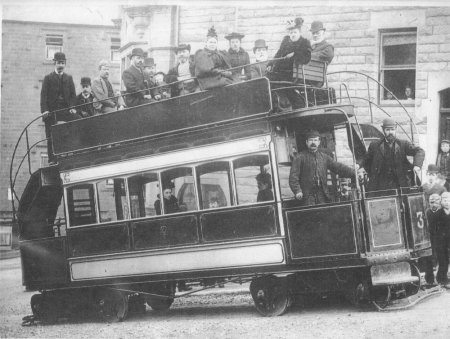
The up- and down-trams passing at Bank Road/Smedley Street, Matlock,
from an unused postcard published by C.Colledge, stationer, Matlock.
(Thanks to Alan Ankers for an exciting auction and a generous scan).
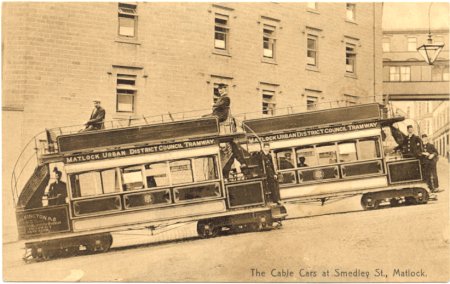
At Crown Square, (see: photo X413)
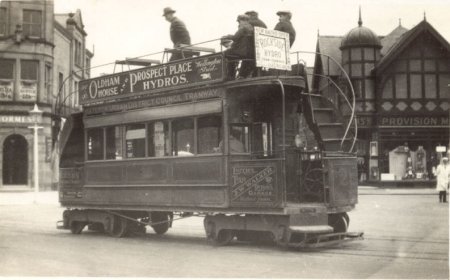
Another angle on the passing point at Bank Road/Smedley Street (see photo X220).
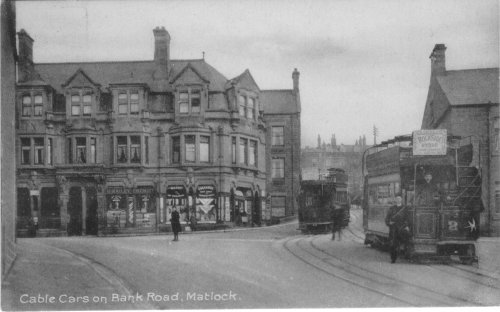
Tram at the terminus at Crown Square. (see photo 189)
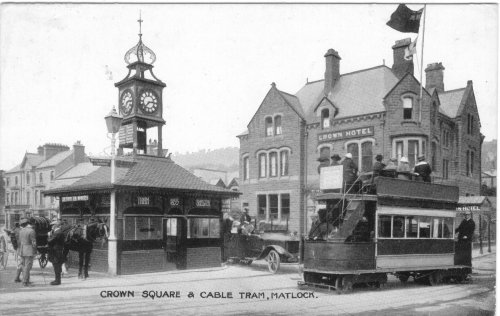
The route up Bank Road. How does the driver know when the cable starts to pull?
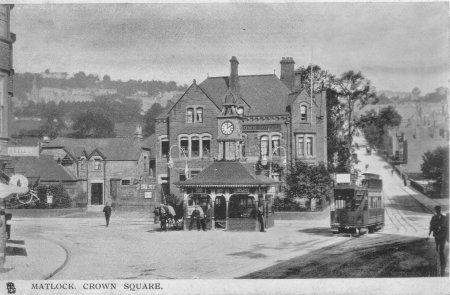
Starting the long climb up Bank Road.... (see photo 189)
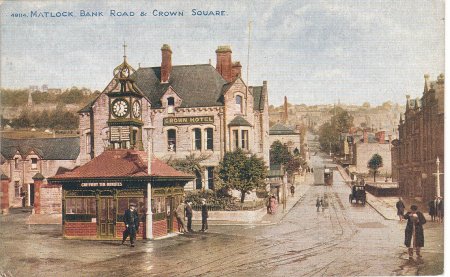
Passing the Town Hall....(Depot chimney in the distance, postcard 1906)
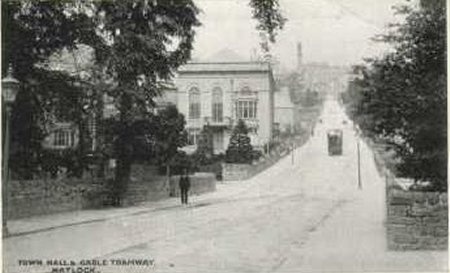
Matlock's steep-gradient Trams
The Tramway opened in 1893 and closed in 1927.
It carried passengers between the railway station and the famous Hydros
of Smedley's and Rockside. The tram was the steepest
in the world (on a public road), 1 in 5½ (18%). So steep that the
two trams (one going up, the other going down) were pulled by a cable
running under the road. The trams went from Crown Square to Rutland
Street, up the very steep Bank Road. Originally the route was planned
to start
at the railway station, close to the River Derwent, but because of the
danger of flooding the terminus was moved to Crown Square. The Depot in
Rutland Street contained a boiler and stationary steam engine, which
pulled the cable and lifted the tram 300 feet up Bank Road in half a
mile. Fares used to be "Two pence up, a penny down". Bank Road was not
wide enough for two tracks, so a single track was used, with a "passing place"
where the trams met (see photo). The up and down cables had to run in the
same tube
between the rails. The trams averaged 5½ mph, and had the advantage
of the down-tram balancing the-up tram, and saving power in the Depot
steam-engine. A spare tram was kept in the Depot in case of need.
More photos of the tram on Photo 189.
The Directors of the "Matlock Cable Tramway Company" were: George Newnes (1 month old), Charles Rowland, Job Smith, Dr William Hunter, Robert Wildgoose, and G Croyden Marks
The resident engineer Edward Marks, and his brother Croyden Marks had to overcome many engineering problems, such as: turning circle, dirt blocking the gripper channel, water freezing in the channel, cable stretch, communication between trams, noise problems.
It is said that Job Smith got the idea for a steep-gradient tram for Matlock while in San Francisco in 1862.
Some men who made the famous tram work, and should not be forgotten, are: George Hallam (driver), Charles Foster (engineer), Charles Killick (driver), and John Parker (conductor).
Some adverts on the tram, read off enlarged photos:
Written above tram windows: |
Below driver's position: |
Also below driver's position: |
written on stairs: |
On top deck: |
Below driver: |
Click on photo for enlargement (on CD only)
Have any more information about this photo?
Please e-mail the author on:
Bank Street during construction (see photo 222)
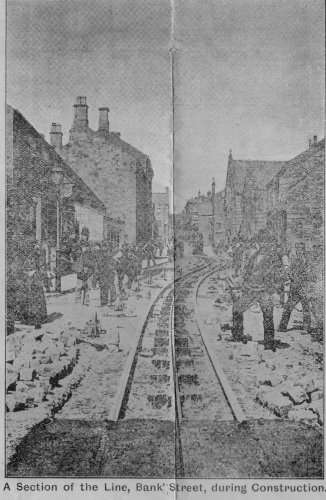
The Cable Tramway Depot (during construction), at the
junction of Rutland/Wellington Streets, where the
stationary steam engine pulled the cable which pulled
the trams up Bank Road. (see photo 223)
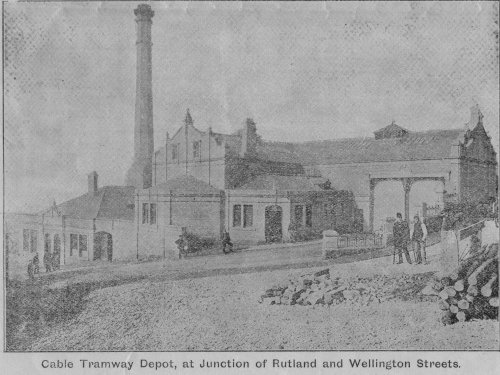
At Crown Square, looking towards the Bridge.
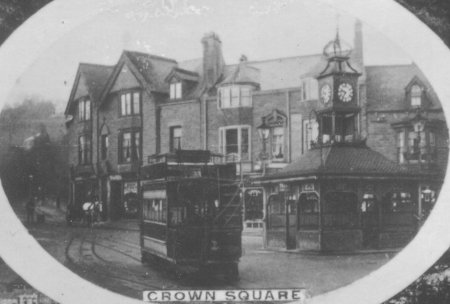
The (single) track half way up Bank Road (see photo 176)
